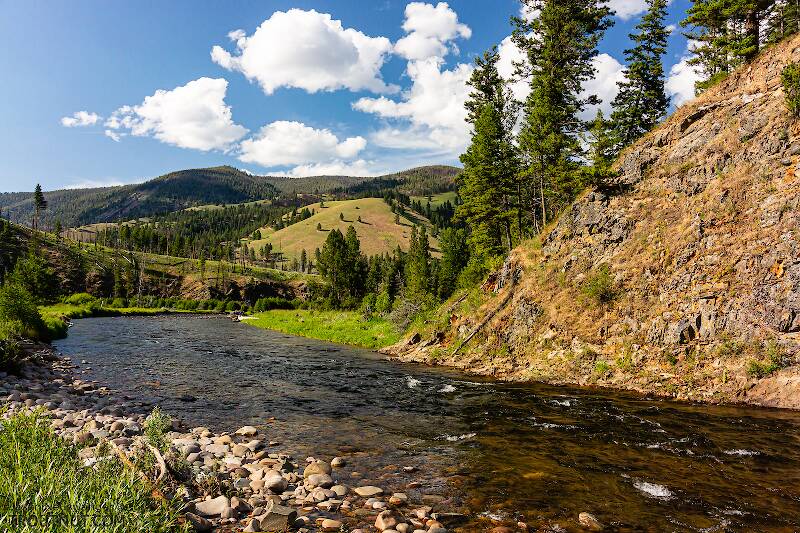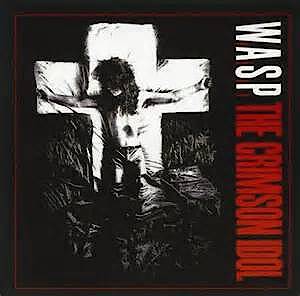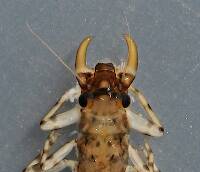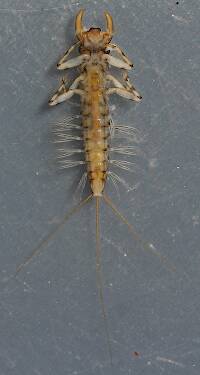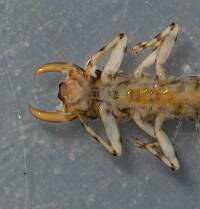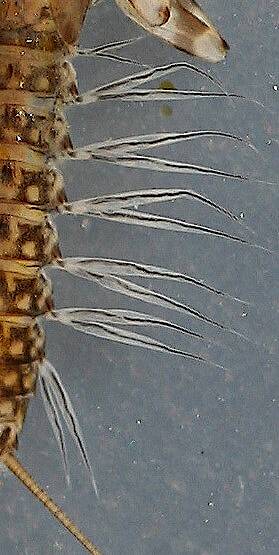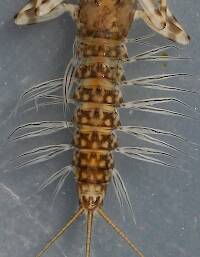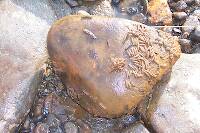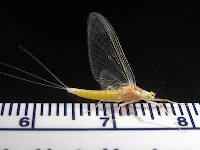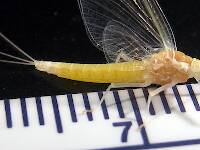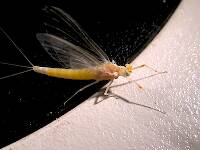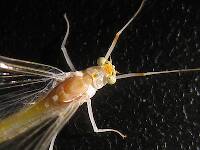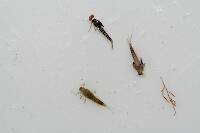
Salmonflies
Pteronarcys californica
The giant Salmonflies of the Western mountains are legendary for their proclivity to elicit consistent dry-fly action and ferocious strikes.
Featured on the forum

Troutnut is a project started in 2003 by salmonid ecologist Jason "Troutnut" Neuswanger to help anglers and
fly tyers unabashedly embrace the entomological side of the sport. Learn more about Troutnut or
support the project for an enhanced experience here.
Adirman on May 18, 2011May 18th, 2011, 1:25 pm EDT
This season I've resolved to FINALLY try to bone up on my bug recognition!
So, I was thinking that I might collect specimens for identifcation and to help me compare between specimens in seasons to come. Having said that, can anyone recommend a good specimen container system for keeping bugs long term and also, what preservatives would/might be necessary?
So, I was thinking that I might collect specimens for identifcation and to help me compare between specimens in seasons to come. Having said that, can anyone recommend a good specimen container system for keeping bugs long term and also, what preservatives would/might be necessary?
Creno on May 18, 2011May 18th, 2011, 3:17 pm EDT
For long term storage of aquatic insects I use 70-80% ETOH in glass screwtop vials with polycone/polyseal lids. I use 4 dram vials although I know lots of folks who use smaller (2-3dram) ones. There are other approaches (dry collections, shell vials, etc.) and preservatives (formalin, Isopropyl alcohol, Kahle's fluid, freezing, etc.). All of which are used for specific purposes. For a general collector who wishes to easily examine the collection I recommend screw top vial for ease of access to material and ETOH for general safety (safer fumes - although flammable). The polycone/polyseal vials, when correctly sealed, seldom lose fluid. The biggest problem seems to be a chip in the vial rim that does not allow a tight seal. I check my vials every year or so to see if any have lost any fluid - and replace the vial that has.
I recommend settling on a size/method up front as you can then standardize your vial storage system for ease of use. There are lots of dealers out there - search glass vials or entomological supply. You can also drop me a pm.
One of the most important items for a collection to be useful is proper collection information with the sample. A specimen without accurate collection data looses 95% of its value as far as I am concerned. At a minimum you need enough information so that someone is able to go back to that same place. At a minimum: State, County, indication of habitat (stream, lake, marsh, spring, light, spiderweb, etc.), detailed locality (eg. bob creek at bill road, four miles east of joe city), collector, and date. Some folks are now starting to use GPS info (I prefer digital lat/long) and it is a good addition but do not use it alone. A typo in a location can usually be deciphered - a typo in a lat/long cannot.
And, if you actually start to accumulate material for the long term please consider placing in a long term, well curated museum collection of aquatic insects once you are done using it. Too often such collections are simply tossed out and the value is lost.
may the collector gods be with you............
creno
I recommend settling on a size/method up front as you can then standardize your vial storage system for ease of use. There are lots of dealers out there - search glass vials or entomological supply. You can also drop me a pm.
One of the most important items for a collection to be useful is proper collection information with the sample. A specimen without accurate collection data looses 95% of its value as far as I am concerned. At a minimum you need enough information so that someone is able to go back to that same place. At a minimum: State, County, indication of habitat (stream, lake, marsh, spring, light, spiderweb, etc.), detailed locality (eg. bob creek at bill road, four miles east of joe city), collector, and date. Some folks are now starting to use GPS info (I prefer digital lat/long) and it is a good addition but do not use it alone. A typo in a location can usually be deciphered - a typo in a lat/long cannot.
And, if you actually start to accumulate material for the long term please consider placing in a long term, well curated museum collection of aquatic insects once you are done using it. Too often such collections are simply tossed out and the value is lost.
may the collector gods be with you............
creno
Jmd123 on May 19, 2011May 19th, 2011, 12:19 am EDT
www.bio-quip.com
Check it out!
Jonathon
Check it out!
Jonathon
No matter how big the one you just caught is, there's always a bigger one out there somewhere...
Adirman on May 19, 2011May 19th, 2011, 12:25 pm EDT
Thanks to both of you!!
Quick Reply
Related Discussions
Topic
Replies
Last Reply

